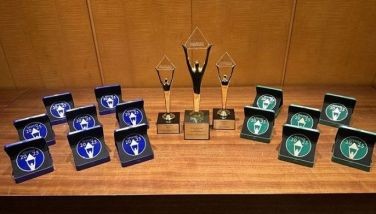Thoughts on 30 years
(Part 2)
On Saturday, this writer reminisced about what has changed and what hasn’t changed in Philippine sports since 1986. The systems have changed, but, save for a few bright spots, it has been difficult to paint a rosy overall picture. Athletes come and go, officials overstay, and the gulf between the Philippine Olympic Committee and Philippine Sports Commission, and even the POC and certain national sports associations, have been an additional hurdle for athletes to overcome. In what areas have we really made progress in over the last 30 years?
The steadily increasing migration of Filipinos overseas has naturally produced athletes who have been fortunate to ride on the advancements in sports in other countries. From the Depression era and the success of Filipino pugilists like Pancho Villa, to the 1940’s and the American country club swimming boom which lifted Victoria Manalo Draves to two Olympic gold medals in diving, Filipinos have been winning in international competition, albeit mostly for the United States. In the last 30 years, Filipino products of migration and inter-racial marriages have absorbed the culture of their adoptive countries and learned the sports native to those countries. A select few have elected to represent the Philippines, and their numbers are growing.
Naturally, the tens of millions of overseas Filipino workers have been a contributing factor to sports, but when you look at it, not to the degree that we previously may have thought. After all, many of them leave their children behind so as to not have to spend in the countries they work in, thereby saving money. OFWs themselves have crewed yachts, been support staff on professional basketball teams, coach and train children in basketball and other sports, and, in the case of billiards players, augment their incomes by doing short stints as paid teaching pros. But there are very few outstanding athletes who have emerged from families with one parent working abroad. Generally, our breakout Fil-foreign athletes have come from couples or even entire families leaving the country, if not single Filipinos (male or female) marrying foreigners.
In the case of the former, you would have athletes ranging from the world stacking champion Purugganan brothers to Jimmy Alapag. There are usually two things that lead them back to wearing the flag. It starts out with them being exposed to more competitive sports environments at a very young age, thus weeding out those who aren’t really meant to have careers in sports. The various recreation centers, public sports facilities and widespread media exposure given to sports provide a greater impetus to getting them into the games early. Later, it becomes a factor in being able to skirt the cost of acquiring private school education through athletic scholarship. This is a big fork in the road, particularly in the US, as professional or semi-professional athletes in Europe and other territories are able to earn at much younger ages.
After that, one of three things happens. In the first scenario, the child eventually reaches the Peter Principle point of diminishing returns and chooses a career which is merely an adjunct to being an athlete (coach, trainer, physical therapist, and so on) or simply quits sports altogether and proceeds towards what some people tritely call a “real job”. In the second case, the child succeeds wildly and becomes a tremendous success, earning a spot on a high-profile squad and playing at the sport’s highest level where he or she already is, often while in college or immediately upon graduating. Unfortunately, in this case, it would be difficult to entice the athlete concerned with representing the country in international amateur competition, for a few reasons. One, the compensation is less. Two, they would not have time or the inclination to risk a lucrative short-term career on a very brief and risky flirtation with the national team. Three, they may feel more of a connection to their new country than the Philippines. In other words, it is quite rare to come across someone in the position of Jordan Clarkson.
This is more of a challenge in team sports, obviously. We have had runners, ice skaters, tennis players, swimmers and other athletes already training in their foreign fatherlands. They receive similar support from the government or from the national sports association concerned, and are usually just plugged in during actual competitions. After all, it is always beneficial to train where the best competition is, and where the funding is found. For team sport, the cost is multiplied. Travel becomes prohibitive, food and living expenses dramatically increase. Given the inconsistent appropriations bestowed by congress, it’s a wonder any sports can plan ahead at all.
So where does that leave us? Somewhere in between, it would seem. That is why we have many Filipino-foreign athletes coming from smaller schools in the US, or farm teams in Europe. The young athletes in question are generally at a point where they either have to earn for the family already or do not have a realistic chance of making it into the big leagues. In the same manner that PBA imports use the league as a stepping stone to hone their crafts or as a launch pad to the NBA, Filipino-foreign athletes see coming home or representing the country as a viable, realistic path to fulfilling their dreams. Big fish in a little pond versus being little fish in a big ocean.
One way to increase the chances of Filipino athletes succeeding abroad is to create stronger symbiotic relationships with foreign sports institutions, which was shown successful beginning in the 2005 Southeast Asian Games, and prior to that, during the time of PSC chair Butch Ramirez. Ramirez reached out to both private and government sports agencies in the US, China, Australia and Europe to expose our athletes to the world’s best in their various sports, to push them to excel further and give them a legitimate yardstick to measure themselves against. Traditionally, we would just know how strong our competition is at actual tournaments, though this in itself is already financially challenging to many sports that aren’t supported or supplemented by private funding. This, coupled with a strong, global talent identification program would complete the picture of exactly how much talent is out there, and where it is.
- Latest
- Trending





























